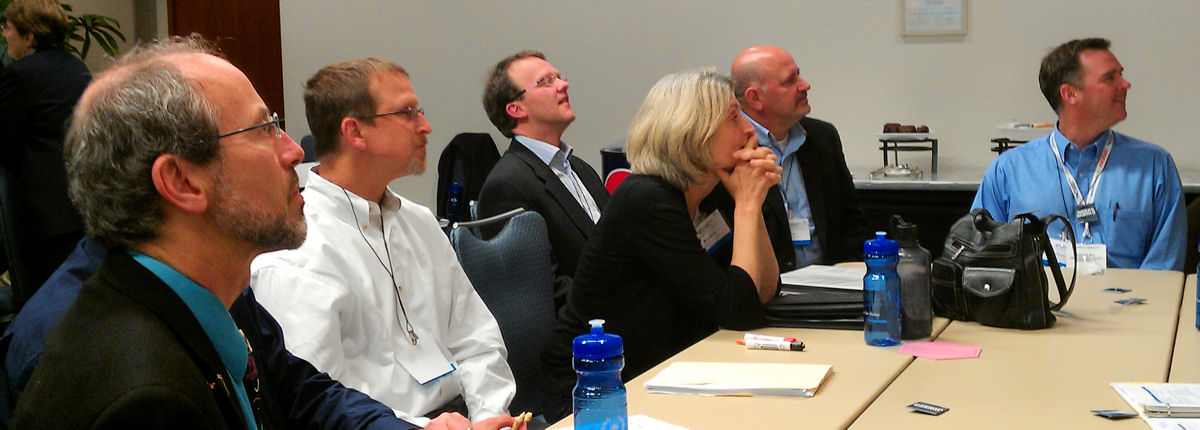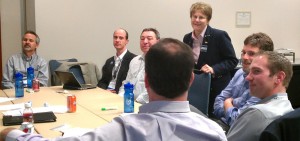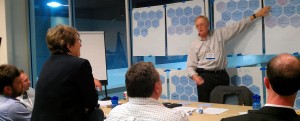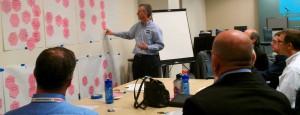The old saying goes, “One man’s trash is another man’s treasure.” In the case of wastewater, what a city flushes is an entire treasure trove of resources: nutrients, water, and energy. The key is developing the infrastructure and a culture, internally and externally, that supports recovering these resources through wastewater treatment facilities.
“Start by showing people that we can make something beautiful with what is flushed down the toilet,” said Coert Petri, senior advisor for wastewater treatment at Waterschap Rijn en Ijssel in Doetinchem, Netherlands.
March 28 and 29 in Raleigh, N.C., Petri and three other experts discussed the drivers, first actions, aspirations, and challenges they faced in implementing wastewater energy programs. These presentations were part of the Roadmap to Energy Sustainability, a meeting hosted by the Water Environment Federation (WEF; Alexandria, Va.).
This meeting brought together nearly 40 water professionals with experience in generating renewable energy at wastewater treatment plants. The goal of the meeting was to create a “road map” to help plants reduce energy consumption, reach energy neutrality, and eventually become energy positive — generating enough to supply others.

Water industry leaders learn about wastewater energy programs at the Roadmap to Energy Sustainability meeting. WEF photo/Kristina Twigg. Click for larger image.
Saving money and gaining support drive energy generation
East Bay Municipal Utility District (EBMUD; Oakland, Calif.) is a forerunner in energy generation. EBMUD produces more than 100% of its energy through renewable technologies. EBMUD’s energy portfolioincludes biogas production of more than 55,000 MWh/year.
The Sheboygan (Wis.) Wastewater Treatment Plant began by becoming energy-efficient first, reducing its energy use by 20% of its 2003 baseline. The plant accomplished this by combining energy-saving changes with regular maintenance and equipment replacement. New motors and variable-speed drives helped the plant reduce energy use by 157,000 kWh/year, an annual savings of $5300. Replacing blowers saved the plant another $63,889 in 2009.
“We started by developing an energy survey report that identified a number of opportunities for energy efficiency,” said Joe Cantwell, energy advisor at Science Applications International Corp. (McLean, Va.), who worked with the Sheboygan Wastewater Treatment Plant. Now, the plant produces 70% to 90% of its own energy.
Support from associations is another a key driving factor, Petri said. The Dutch Association of Regional Water Authorities (Den Haag, Netherlands) held an innovation challenge in 2008. The winning concept was the energy factory, which brands wastewater treatment plants as resource recovery facilities. These facilities produce not only renewable energy, but also nutrients and cellulose, which is used in bioplastics and paper. This concept generated a positive public response and government support.
“You have to start by communicating in a different way,” said Petri, whose water board, along with 12 others, developed a colorful, straightforward marketing campaign. Now, the Netherlands is planning to open 12 energy factories by 2015. One is scheduled to be operating by the end of the year.

Jeanette Brown (second from right), WEF immediate past president, talks to meeting attendees. WEF photo/Kristina Twigg. Click for larger image.
Barriers and challenges
The participants at the Roadmap to Energy Sustainability meeting also discussed barriers and challenges that would have to be overcome.
According to the Water Environment Research Foundation (WERF; Alexandria, Va.), wastewater and biosolids contain 10 times more energy than is required for treatment. Yet, roadblocks remain to capturing this energy and becoming energy-neutral.
First is funding. “A 7-year payback is easy, 8 to 10 [years] is harder,” said Rob Ostapczuk, principal engineer at Malcolm Pirnie, the water division of ARCADIS (Highlands Ranch, Colo.) “So, seed money is critical.” Selling something that is not codified or required also is difficult, Cantwell added.
Producing energy also imposes new operation and maintenance challenges. To produce more biogas, EBMUD expanded its organic-waste acceptance program to supplement its municipal wastewater. Some of the organic material came from dairies, olive waste, and even poultry farms. Operators were pulling chicken heads out of pumps, McCormick said. “Every day, there was a new crisis.”
Another challenge is developing organizational commitment, Ostapczuk said. Energy programs require the support of all departments. He recommends developing an interdepartmental energy implementation team to build support at all levels.
Utilities also have to confront economic and regulatory barriers. For example, not all states include biosolids in their renewable-energy portfolios. And navigating metering laws and accepting low prices for wastewater-generated energy can discourage utilities from feeding energy back into the grid.

Water industry professionals work to develop a Road Map to Energy Sustainability. WEF photo/Kristina Twigg. Click for larger image.
Meeting participants also cited size as a challenge. For now, it is most feasible at large treatment plants because small to medium utilities may find it difficult or impractical to reach energy neutrality, participants explained.
Yet, while large facilities represent a small percentage of total wastewater treatment plants, they could capture the majority of energy in domestic wastewater by becoming energy-positive, according to the WERF fact sheet Energy Production and Efficiency Research — The Roadmap to Net-Zero Energy.
WEF provides the road map
WEF’s Road Map to Energy Sustainability will be a series of steps to help wastewater utilities plan and implement a wastewater energy production program. The road map will be applicable whether plants choose simply to increase energy efficiency or to build a full-scale cogeneration system. The steps will be arranged under various domains, from technical needs to managerial aspects, and will be applicable to small, medium, and large facilities.
WEF will release the draft road map and a technical summary this summer. A guidance document will follow at WEFTEC® 2012.
Read details about WEF President Matt Bond’s experience participating in the meeting in “From the President: Driving Innovation in the Water Sector.”
— Kristina Twigg, WEF Highlights
How does biogas work? |
| Food wastes help feed hungry bacteria that reduce and stabilize biosolids while producing a mixture of methane and carbon dioxide known as biogas. This gas can be burned to heat digesters, boilers, and plant buildings. Steam produced in boilers also can be used to generate electricity or dry biosolids. Often, biogas is used to fuel engines that drive electric generators while capturing heat for additional uses. Finally, biogas can be cleaned, compressed, and used to power vehicles. |









June 13, 2012
Featured, Technologies, WEF Resources & Efforts